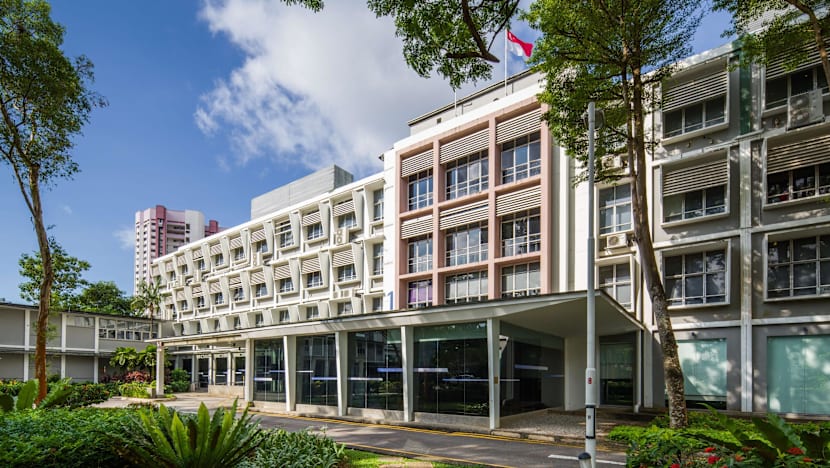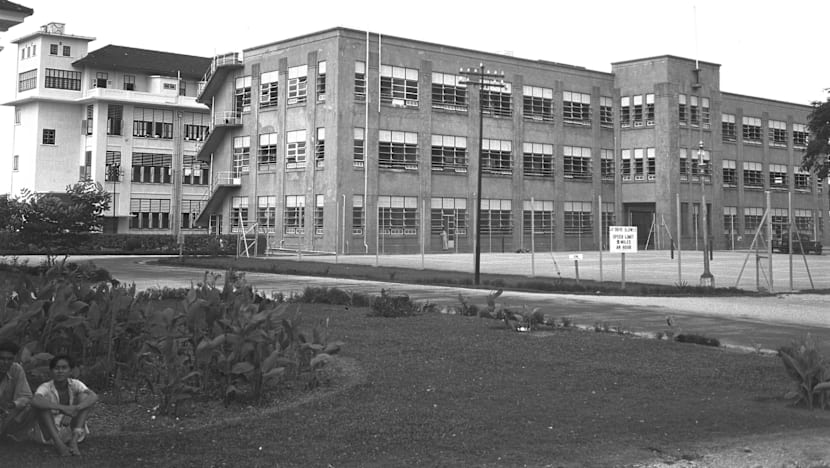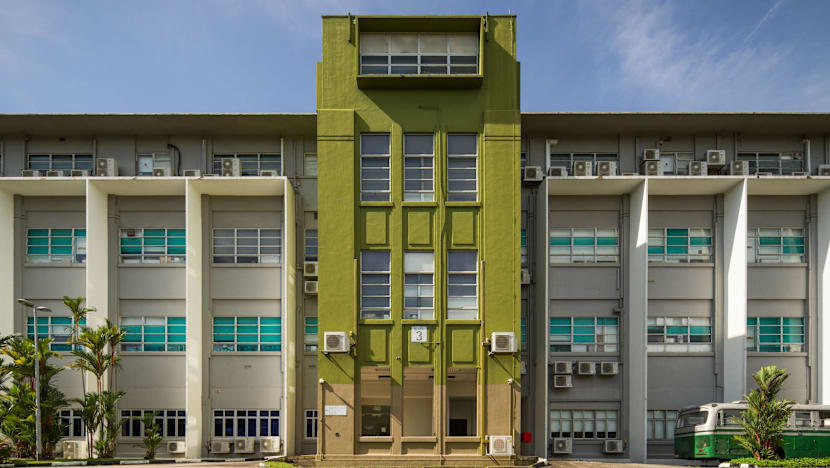Former Kandang Kerbau Hospital gazetted as Singapore's 76th national monument
The site at 1 Hampshire Road is the first national monument to be gazetted in more than three years.

Block 1 of the former Kandang Kerbau Hospital in the present day. (Photo: Finbarr Fallon)

This audio is generated by an AI tool.
SINGAPORE: The former Kandang Kerbau Hospital (KKH) was gazetted on Wednesday (Oct 1) as Singapore's 76th national monument.
This designation, which covers three blocks of the former hospital, commemorates the site's socio-cultural value and national significance, the National Heritage Board (NHB) said in a media release.
"Situated at 1 Hampshire Road before the hospital's relocation in March 1997, the former KKH was the only government hospital in Singapore specialising in obstetrics and gynaecology at the time," NHB said.
"The site holds an important place in Singapore's history, having witnessed many groundbreaking medical firsts and the births of over 1.2 million babies."
Kandang Kerbau Hospital was renamed KK Women's and Children's Hospital when it moved to 100 Bukit Timah Road, just across from its former site, with the current institution continuing to be known as KKH.
Acting Minister for Culture, Community and Youth David Neo officiated at the gazetting of the site on Wednesday, which also marked the 101st anniversary of KKH's establishment as a dedicated maternity hospital.
HISTORY OF THE SITE
KKH's name originates from its former site's distant past, when buffalo pens belonging to the colonial-era department of transport were located in the area. "Kandang kerbau" is Malay for "buffalo enclosure".
In 1858, a general hospital was established at the site, and it later became known as the Pauper Hospital for Women and Children. It later evolved into a free maternity hospital known as Kandang Kerbau Hospital in 1924.
From 1941 to 1942, during World War II, the hospital functioned as an emergency general hospital. After Singapore fell to the Japanese, it became a civilian hospital known as Chuo Byoin, or "central hospital" in Japanese.
During the war, Dr Benjamin Henry Sheares, who later became Singapore's second president, served as the hospital's deputy medical superintendent. Concerned by high maternal mortality rates, he introduced the lower-segment Caesarean section in Singapore, reducing the likelihood of complications during surgery and resulting in a scar that could better withstand future pregnancies.
This procedure made childbirth significantly safer for women, said NHB.
"Postwar, the former KKH resumed its role as a specialised obstetrics and gynaecology hospital, introducing state-of-the-art technology and innovative care practices, facilitated by Dr Sheares, which placed the hospital on the world map," it added.
In 1966, the year dubbed the year of the "birth-quake", the hospital recorded the delivery of 39,835 babies and earned a spot in the Guinness Book of Records for delivering the highest number of babies at a single maternity facility within a year.
"At its busiest, an infant was delivered every 13 minutes and 11 seconds, and the hospital welcomed more than 110 babies per day," NHB said.
"With those figures, the former KKH held the title of the largest maternity hospital in the world for ten years between the 1950s and 1970s."
The School of Midwifery, which played a key role in the development of the midwifery and nursing professions, was opened at KKH in 1952, and the hospital also saw the delivery of Singapore's first pair of conjoined twins in 1961 and Asia's first in-vitro fertilisation baby in 1983.

The former KKH's buildings were known for their use of modern materials at the time of construction, said NHB. Their facades were designed to provide shelter from the tropical climate while allowing natural light and fresh air in.
Blocks 2 and 3, constructed in the prewar years of 1933 and 1940, respectively, are some of the oldest buildings within the compound, while Block 1 was designed by Dr Sheares with the assistance of chief government architect KA Bundle and was completed in 1955.
"The 'concrete fins' framing the windows reduced solar heat gain and glare, offered protection from rain, and promoted cross ventilation to facilitate patients' comfort on their path to recovery," said NHB about Block 1.
Since 2004, the former KKH has served as the headquarters of the Land Transport Authority.
Professor Alex Sia, the chief executive officer of KK Women's and Children's Hospital, said: "The recognition of the former KKH as a national monument is a profound honour – a celebration not only of our pioneers' compassion and vision, but also of the trust that families have placed in us through the decades."

SIGNIFICANCE OF NATIONAL MONUMENTS
The preservation of buildings, monuments and sites in Singapore is guided by the Preservation of Sites and Monuments (PSM) division under NHB, with advice from the PSM Advisory Board.
According to NHB, national monuments are an "integral part of Singapore's built heritage" preserved and promoted for posterity. They are accorded the highest level of protection in Singapore under the Preservation of Monuments Act.
The former KKH site is the first national monument to be gazetted in more than three years. The last one to be gazetted was the Padang, which became Singapore's 75th national monument in August 2022, just six months after Fort Siloso was declared its 74th.
Ms Melissa Tan, the director of heritage policy and research at NHB, said: "Our national monuments keep alive the stories of the men and women who have built our nation. Each monument tells different facets of the Singapore story."
The former KKH connects generations of Singaporeans across all backgrounds and communities, she added.
"Many families in Singapore would have personal KKH stories that they hold dear. This gazette pays tribute to the site's strong national significance, and preserves the buildings' stories of care as part of our legacy for future generations," she said.
Visitors can access the former KKH site at a commemorative special exhibition called The Architecture of Care, which will run from Wednesday until Dec 31.

















